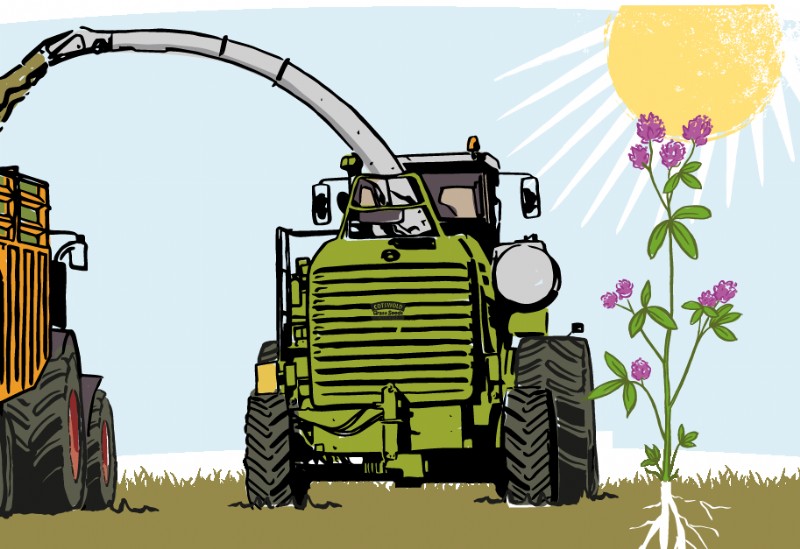

Suitable soils and optimum pH
Gravels and free-draining soils with a pH 6.5-8.
When to sow
Lucerne must be sown into warm soils and is often undersown to a spring cereal crop as it is slow to establish. Reducing the cereal seed rate by a third and cutting it as arable or wholecrop silage will give lucerne the best start. Alternatively, sow in the summer following an early-harvested cereal such as winter barley. The middle of August is the latest date for sowing if a good seed bed can be made and there is sufficient moisture available.
How to sow
The seed of lucerne is small and needs to be sown to a maximum depth of 15mm otherwise a patchy, thin crop will result. Roll before and after sowing to help achieve fast germination and weed competitiveness. Sowing with a companion grass mix helps out-compete weeds enabling lucerne leys to be left down for longer. Herbicides exist but are limited and it is good practice to obtain a clean seedbed prior to sowing.
Management
Following a direct spring sowing a light cut may be taken in mid August. From a summer sowing or an undersowing there will be little to cut in the first year. Leave until the following spring when it should be cut for the first time in early June at almost full flowering. Thereafter cut at the bud stage as this provides the ideal balance between yield and quality. Two or three further cuts follow at six week intervals. After cutting, the crop needs wilting so that it contains less than 70% moisture when made into baled silage. Hard or frequent grazing should be avoided especially during its first year as the crop will not tolerate it. Lucerne can also cause bloat when grazed.
Herbicide options are available during establishment and during the first winter, in pure stands gramminicide options are also available to control grass weeds and volunteer cereals.
Nutrient requirements
Although lucerne requires no N once established it can be beneficial to apply 25kg N/ha to an autumn sowing to promote rapid plant development. P and K requirements are higher than for grass and should be maintained at ADAS Index 2 to maintain yields.
Yield and nutrient data
14t DM/ha annually. A well fermented lucerne/grass silage has a dry matter of 30%, a crude protein of 20%, a D-value of 60 and an ME of 9.7MJ. As a practical example a pure stand can produce 6 round bales per acre (400-450kgs in weight) per cut.
Date Posted: 18th January 2018



